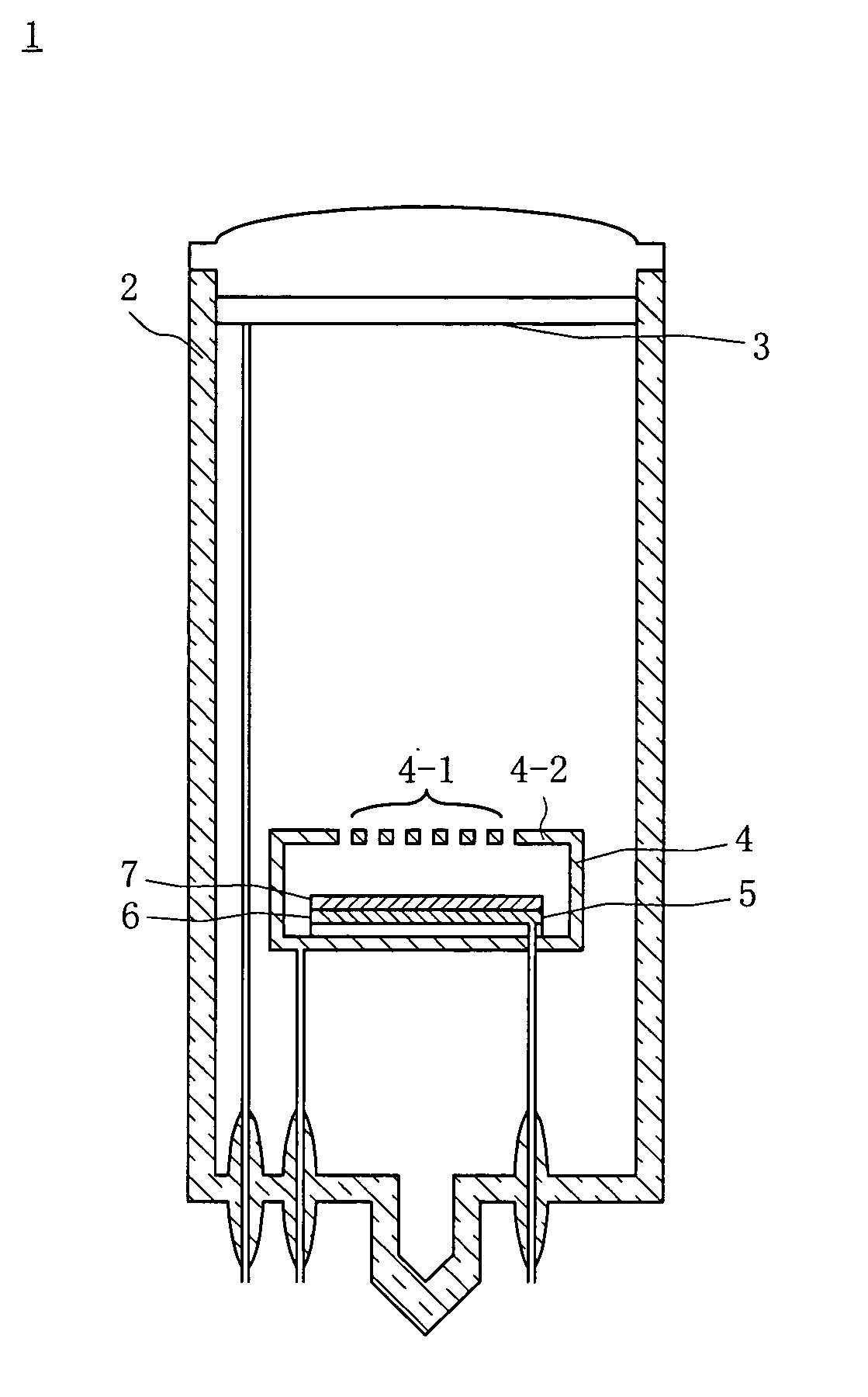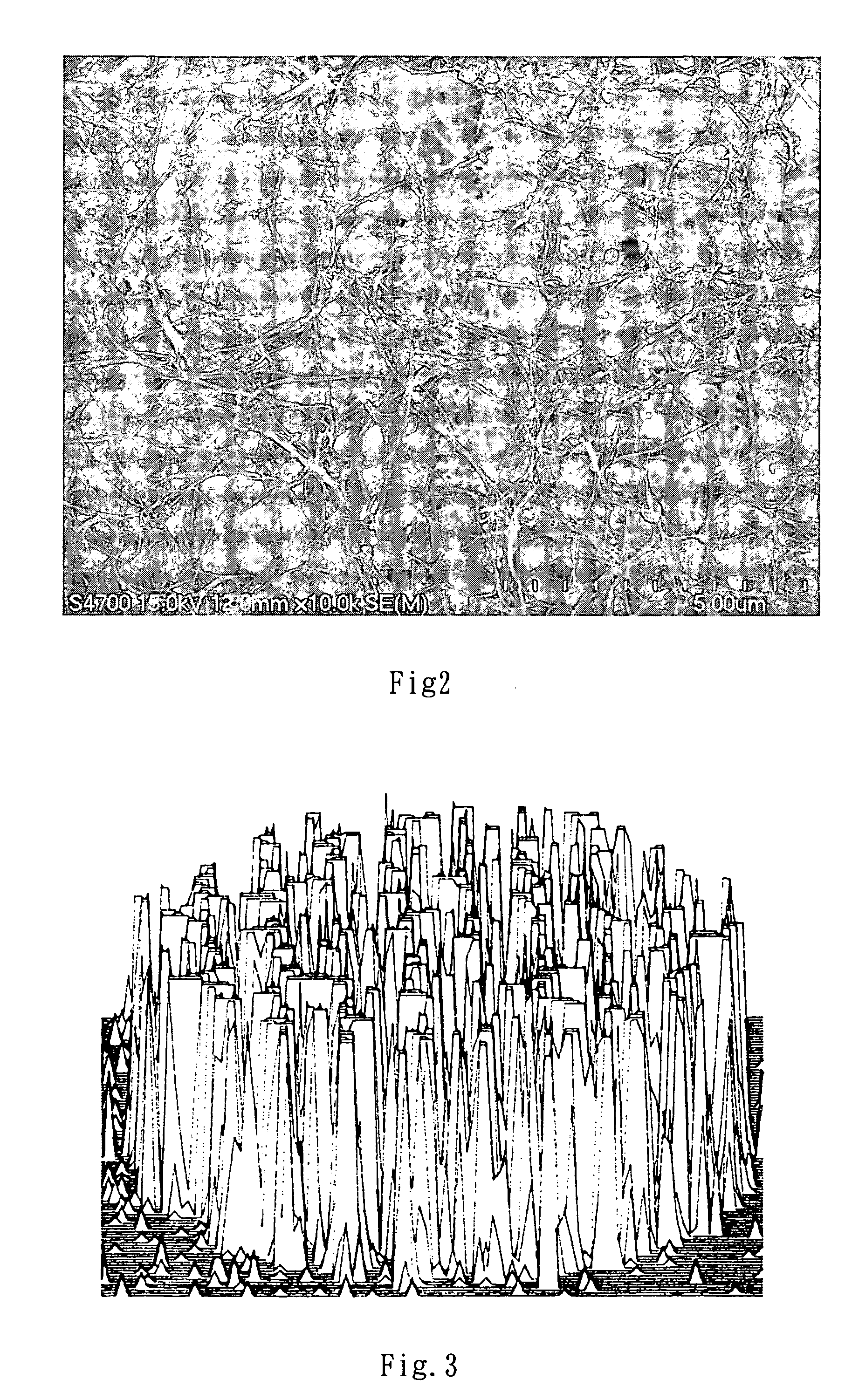Method of manufacturing electron-emitting source
- Summary
- Abstract
- Description
- Claims
- Application Information
AI Technical Summary
Benefits of technology
Problems solved by technology
Method used
Image
Examples
Embodiment Construction
[0019] The embodiment of the present invention will be described in detail with reference to the accompanying drawings.
[0020] Referring to FIG. 1, a light source tube indicated by reference numeral 1 has a vacuum envelope 2 formed by fixing a transparent face glass plate to one end of a cylindrical glass tube by adhesion with low-melting frit glass, and welding, to the other end of the cylindrical glass tube, glass stems through which a plurality of lead pins are inserted and which are integrally formed with exhaust pipes. The interior of the vacuum envelope 2 is vacuum-evacuated to a pressure of about 10−3 Pa to 10−6 Pa.
[0021] In the vacuum envelope 2, an anode 3, on which phosphors (not shown) are deposited on its surface that opposes the face glass plate, is arranged on the end where the face glass plate is arranged. A substantially box-like gate structure 4 is formed to oppose the anode 3 such that a mesh portion 4-1 of the structure 4 faces the anode 3. A cathode structure 5 ...
PUM
| Property | Measurement | Unit |
|---|---|---|
| Pressure | aaaaa | aaaaa |
| Surface energy | aaaaa | aaaaa |
| Density | aaaaa | aaaaa |
Abstract
Description
Claims
Application Information
 Login to View More
Login to View More - R&D
- Intellectual Property
- Life Sciences
- Materials
- Tech Scout
- Unparalleled Data Quality
- Higher Quality Content
- 60% Fewer Hallucinations
Browse by: Latest US Patents, China's latest patents, Technical Efficacy Thesaurus, Application Domain, Technology Topic, Popular Technical Reports.
© 2025 PatSnap. All rights reserved.Legal|Privacy policy|Modern Slavery Act Transparency Statement|Sitemap|About US| Contact US: help@patsnap.com



